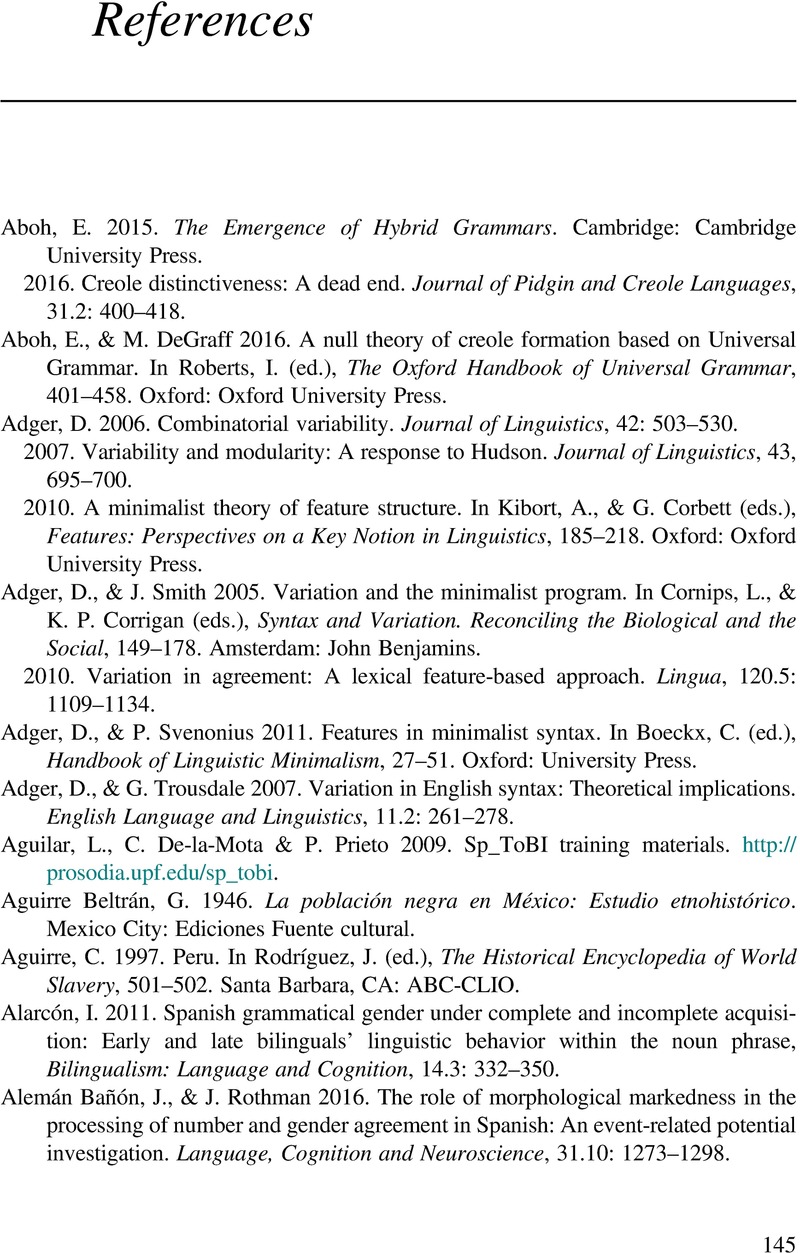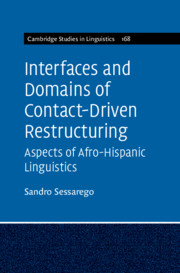Book contents
- Interfaces and Domains of Contact-Driven Restructuring
- Cambridge Studies in Linguistics
- Interfaces and Domains of Contact-Driven Restructuring
- Copyright page
- Dedication
- Contents
- Figures
- Maps
- Tables
- Acknowledgments
- 1 Questioning a Long-Lasting Assumption in the Field
- 2 The African Diaspora to the Andes and Its Linguistic Consequences
- 3 Reconciling Formalism and Language Variation
- 4 Variable Phi-Agreement across the Determiner Phrase
- 5 Partial Pro-Drop Phenomena
- 6 Early-Peak Alignment and Duplication of Boundary Tone Configurations
- 7 Final Considerations
- References
- Index
- References
References
Published online by Cambridge University Press: 21 October 2021
- Interfaces and Domains of Contact-Driven Restructuring
- Cambridge Studies in Linguistics
- Interfaces and Domains of Contact-Driven Restructuring
- Copyright page
- Dedication
- Contents
- Figures
- Maps
- Tables
- Acknowledgments
- 1 Questioning a Long-Lasting Assumption in the Field
- 2 The African Diaspora to the Andes and Its Linguistic Consequences
- 3 Reconciling Formalism and Language Variation
- 4 Variable Phi-Agreement across the Determiner Phrase
- 5 Partial Pro-Drop Phenomena
- 6 Early-Peak Alignment and Duplication of Boundary Tone Configurations
- 7 Final Considerations
- References
- Index
- References
Summary

- Type
- Chapter
- Information
- Interfaces and Domains of Contact-Driven RestructuringAspects of Afro-Hispanic Linguistics, pp. 145 - 168Publisher: Cambridge University PressPrint publication year: 2021



